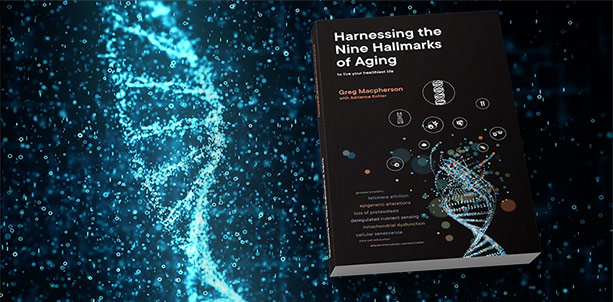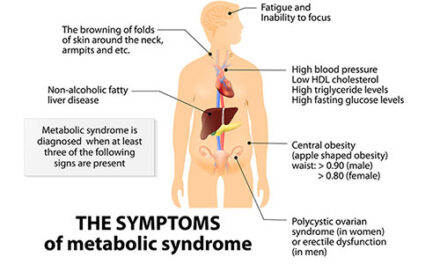For the last billion years or so life on planet Earth has evolved with remarkable diversity, filling every niche, even those that seem unlivable. Included within this diversity of life are creatures that are essentially immortal, for example, the hydra, a fresh-water polyp that can live as long as 1400 years1. Even more incredible is an immortal jellyfish2 (Turritopsis dohrnii) that potentially, has been alive for the last 65 million years! If they had a memory, they could tell us what wiped the dinosaurs out! Recently, researchers re-animated a Bdelloid rotifer, a tiny animal that had been frozen in the Siberian permafrost for more than 24,000 years3.
Yet, for mammals, lifespan is much shorter. Human beings have a potential lifespan of more than 120 years4 which is much shorter than the amazing animals mentioned above but is still remarkable when others, like the common mouse gets only three years5. This hardly seems fair to the humble house mouse when its distant relative, the naked mole rat gets closer to 30 years6.
Can we change the speed we age?
The deeper you look the clearer it becomes that just like the diversity of life there is a diversity of longevity. And with that realization researchers have rushed to investigate the difference between short and long-lived species to identify and perhaps even develop interventions translating the lessons we learn from research and harnessing them to prolong the years we spend youthful and healthy on this planet.
In 2013 scientists published a paper called the Hallmarks of Aging in a research journal called Cell7. This paper identified nine hallmarks or causes of aging that ranged from DNA damage to mitochondrial dysfunction to cellular senescence. Each hallmark qualified as being involved in aging by the results of laboratory experiments. If you made a hallmark worse, it accelerated the aging process and if you protected it, you slowed down the aging process. This paper was important because it gave researchers targets to investigate to see if they could impact aging, and in so doing, they unleashed a phenomenal level of research to find compounds that positively affect each hallmark. And the size of the prize is huge. When a company solves the question of slowing the aging process, it will disrupt a trillion-dollar industry and give birth to a brand new one overnight.
Measuring the speed at which we age
Recently researchers have discovered that we have a biological clock that sits on our DNA with time being recorded by the number of methyl groups attached to our DNA8. Using machine learning they identified patterns of methylation that are closely correlated with our chronological age. And in the process discovered that different people age at different speeds not just outwardly but on the inside as well, and measurably so by looking at their DNA methylation patterns. Of course, we already knew that people age at different rates because we see some people fit and healthy into the 10th decade whereas some are not so lucky and seem to get the diseases of old age as early as their 5th decade. But to have a simple test to confirm this and allow people to assess the age their cells are acting compared to their chronological age is an incredible breakthrough.
What is exciting is that your biological age does not need to be your destiny and can be changed. If you have turned 50 and your DNA methylation is at a level that is usually seen with someone in their 70s then by making lifestyle changes like exercise and diet and taking new supplements you can bring your biological age into line with your chronological age. And perhaps even more exciting is that if your results are similar you can take the same actions to slow down your biological aging. It is entirely possible in your chronological 50s or 60s that you could celebrate your 40th or 30th decade again! And it is available to everyone, today, right now with simple actions.
Moving from luck to strategy in aging
For the first time in human history we are about to take the luck out of getting old with health and vitality and make healthy aging with an extended healthspan accessible to us all. In my book, “Harnessing the Nine Hallmarks of Aging,” I have distilled the very latest in research and created a lifelong healthy aging plan for people who want to age better and arrive at a more mature age with more health and vitality than any previous generation of humans have obtained. I describe specific strategies for those who are in their 30s, 40s, 50s and beyond and share breakthroughs in our understanding of what molecules and supplements can impact and slow the aging process.
For example, molecules like Hobamine (2-HOBA)9, an extract from Himalayan Tartary Buckwheat, has recently been isolated and shows incredible potential to slow the aging process by protecting our delicate DNA and other cellular components and machinery from the damage associated with oxidative stress throughout our lifetime. Also, NAD, nicotinamide adenine dinucleotide, is an important co-enzyme that fuels our mitochondria and our cellular repair and maintenance mechanisms. NAD levels decline in our cells as we age, so by restoring this vital co-enzyme via supplements like NMN10 (nicotinamide mononucleotide) researchers have seen changes in our cells that are associated with levels of health seen in cells that are considerably younger.
Fisetin11, a compound derived from strawberries and other fruits, has the ability to reduce the burden of senescent cells in the body. Senescent cells are cells that have reached the end of their useful life. In younger animals these cells are removed by our immune system, however as we get older our immune system is not as effective in clearing these cells out. The very signals senescent cells send out to communicate they need to be removed from our bodies then start to accumulate leading to an increasingly inflammatory state that has a significant effect on the health of the rest of the cells in our body. Recently, researchers have discovered that by taking fisetin you can help your body remove these unwelcomed zombie-like cells and by doing so you can experience major health benefits. In mouse models, fisetin can increase lifespan by as much as 36%. In another study12, older mice pretreated with fisetin and then exposed to a similar virus to COVID respond to the virus in a way that is more like younger mice suggesting that the reason older humans are so affected by COVID is related to the burden of senescent cells in their bodies. The Mayo Clinic now has clinical research underway to see if the benefit the mice experienced will be replicated in humans13.
In the future, there will be significant advances in our ability to slow the aging process beyond what we have available to us today. For now however, adopting the strategies outlined in “Harnessing the Nine Hallmarks of Aging” will help you slow the speed of aging that your cells experience, and with this you are taking affirmative action to delay the diseases associated with old age. The sooner you start the better shape your cells will be in and this will be reflected in how you feel, how you look and increase your healthspan – the amount of time you spend in your body while experiencing amazing health.
References
- This Tiny Animal Can Live an Estimated 1,400 Years – Scientific American
- Science of the immortal jellyfish, Earth’s longest living animal – Science Focus
- A living bdelloid rotifer from 24,000-year-old Arctic permafrost – ScienceDirect
- Longitudinal analysis of blood markers reveals progressive loss of resilience and predicts human lifespan limit | Nature Communications
- House mouse (Mus musculus) longevity, ageing, and life history – senescence.info
- Naked mole rat may hold the secret to long life – phys.org
- The Hallmarks of Aging: Cell
- Epigenetic clock – Wikipedia
- 2-hydroxybenzylamine – Search Results – PubMed
- Long-term administration of nicotinamide mononucleotide mitigates age-associated physiological decline in mice – nih.gov
- Fisetin is a senotherapeutic that extends health and lifespan – PubMed
- Senolytics reduce coronavirus-related mortality in old mice | Science
- COVID-FISETIN: Pilot in SARS-CoV-2 of Fisetin to Alleviate Dysfunction and Inflammation – ClinicalTrials.gov











